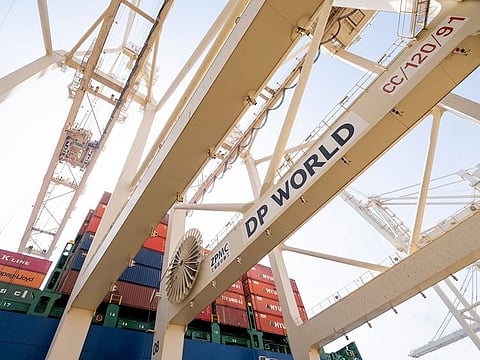DP World has come quite the distance from its first tentative steps
Dubai’s ports and terminals operator will also chart city’s future as a global powerhouse

Several years ago, I remembered reading an article about how great companies think, and the various definitions of corporate success. While many economists - and capitalists - would agree the bottom-line is the only critical benchmark, I, along with many, would argue that the true extent of great companies reaches beyond profit and into their net positive effect on the societies in which they operate.
It is the very nature of how they impact employees, partners, consumers and, to a greater extent, the cities and nations in which they grow. In the UAE, we are fortunate to have a significant trade and logistics sector; however, without DP World, I believe our business landscape and international significance would be very different.
Long before the UAE formed as a nation just over 50 years ago, its status as a trade hub connecting the Far East to Europe dated back over 4,000 years, with some 12,000 artefacts found buried approximately 60 kilometres from where Dubai has since flourished. From the recently discovered metallurgical neighbourhood of Saruq Al Hadid, which peaked during the Iron Age, to the emirate’s more widely known status for pearls, trade has always been more than just a business focused on revenue but a way of life that has driven the formation of cultural and creative ideas.
A more recent past for Dubai
Several decades before the unification of the Emirates, Dubai Creek and Khan Creek in Sharjah were amongst the primary trade destinations in the region, with merchant ships anchoring offshore awaiting barges to discharge their cargos at customs. However, due to silting, the creek needed to be dredged in 1959 and again in the 1970s, and while the import of a mechanical, dockside crane from Scotland was meant to improve efficiency, it was only able to make a slight improvement due to the volume of goods arriving.
With most cargo unloaded on the sand, some shipments were pulled either by labourers, donkeys, or trucks, if lucky, to their respective godowns, or lockups, before being ready for collection or distribution.
Jebel Ali Ports’ first steps
As a state in its nascency, in addition to the effects of the global recession of 1973- 75, the gamble to invest in Port Rashid in 1972, before expanding to Jebel Ali in 1976, thereafter completing its first phase of development by 1979, was indisputably one of risk, but one based in the firm belief that the UAE had more to offer than its historically traditional commodities.
By the 1980s Port Rashid had developed into a major port, with almost 70 per cent of its containers never entering Dubai but instead being marked for re-export. Meanwhile, Jebel Ali was struggling - not only due to its perceived distance from Dubai but also due to its management contract, which had gone to US-based Sealand Shipping, making other shippers reluctant to use them.
As stated in Jon Cuthbert’s, ‘The 40-year history of UAE logistics’, “By 1990, Dubai Government faced a dilemma. They owned two ports – Jebel Ali Port and Port Rashid. Each was managed by different contractors who acted as rivals, competing with each other for the same business. Port Rashid was full to overflowing and demanding substantial government investment in new berths, dredging and equipment. Jebel Ali Port had minimal throughput and extensive under-utilised facilities.
“Dubai Government’s response was to terminate both management contracts and absorb the management and staff in both ports into a new government owned (but commercially independent) company called Dubai Ports Authority. Shipping lines resistance was overcome by offering inducements to relocate to Jebel Ali Port and consignees’ perception changed by using Jebel Ali Port’s trucking fleet to move containers between the two ports at no cost to the consignees. The net result was that throughputs started to grow at both ports.
“By the late 1990s, it became apparent that Jebel Ali Port did not have sufficient space to handle future cargo projections or accommodate Port Rashid’s throughput should the strategic decision be made to close Port Rashid. Port Rashid’s location in the centre of Dubai had always been a significant advantage in its early days but increasing heavy road traffic generated by Port Rashid’s operations and Dubai’s expansion meant Port Rashid’s traffic now presented both an environmental hazard and a road safety hazard to commuters. Eventually it was the substantial extensions to Jebel Ali Port which began in the early 2000s, which enabled Port Rashid to close operations in 2008.”
Creation of a logistics behemoth
In its contemporary form, DP World was established through the merger of Dubai Ports Authority and Dubai Ports International in 2005 and has since emerged as one of the world’s largest port operators, handling more than 70,000 vessels across 82 marine and inland terminals present in over 40 countries. As a result, its development led to it being responsible for approximately 10 per cent of the world’s container traffic.
Sign up for the Daily Briefing
Get the latest news and updates straight to your inbox








